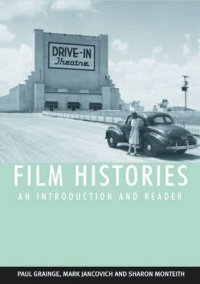
Ebook: Film Histories: An Introduction and Reader
Author: Paul Grainge, Mark Jancovich, Sharon Monteith
- Year: 2007
- Publisher: Edinburgh University Press
- Language: English
- pdf
A wide-ranging introduction to film history, this anthology covers the history of film from 1895 to the present day. The book is arranged chronologically, and each chapter contains an introduction by the editors on the key developments within the period, followed by a classic piece of historical research about that period. Various types of film history are undertaken in the articles, so that students can become familiar with different types of film historical research. For example, topics include the history of audiences; exhibition; marketing; censorship; aesthetic history; political history; and historical reception studies. The book is therefore designed to provide students with a narrative history spine while simultaneously introducing them to different approaches to the study and research of film history. Concentrating on the plurality of the ‘historical turn’ in film studies, this book demonstrates that film history is, and should be, about more than simply key films, directors and movements.Key features*Contains a preface that explains the structure and organisation of the book*Chapter introductions provide a chronological sense of international developments
A wide-ranging introduction to film history, this anthology covers the history of film from 1895 to the present day. The book is arranged chronologically, and each chapter contains an introduction by the editors on the key developments within the period, followed by a classic piece of historical research about that period. Various types of film history are undertaken in the articles, so that students can become familiar with different types of film historical research. For example, topics include the history of audiences; exhibition; marketing; censorship; aesthetic history; political history; and historical reception studies. The book is therefore designed to provide students with a narrative history spine while simultaneously introducing them to different approaches to the study and researc